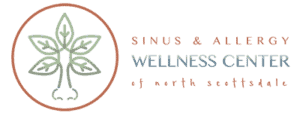Is It a Cold, the Flu, or a Sinus Infection? How to Tell and When to Seek Help
Is It a Cold, the Flu, or a Sinus Infection? How to Tell and When to Seek Help
When you start feeling congested, achy, or just downright lousy, it’s easy to jump to conclusions about what’s going on. Is it just a cold that’ll pass in a few days? Could it be the flu that’s going to knock you out for a week? Or is this the start of a stubborn sinus infection?
With symptoms that can sometimes blur together, figuring out what’s happening isn’t always straightforward. Knowing what you’re dealing with can help you choose the best remedies—and decide if it’s time to call in extra help. Here’s how to tell which one you might have and when to seek advice from a healthcare provider.
Cold Symptoms
Colds are typically mild but can be annoying, especially if they linger. They usually start with a sore throat or runny nose, followed by sneezing, mild cough, and congestion. You might feel a little tired, but colds don’t usually cause high fevers or severe fatigue.
- Symptoms: Runny or stuffy nose, sneezing, sore throat, mild cough, and occasional mild headache.
- Duration: Colds usually last 5-7 days, and symptoms tend to improve gradually.
- Treatment: Most colds clear up on their own with rest, hydration, and over-the-counter remedies to ease symptoms like congestion or a sore throat.
Flu Symptoms
Flu symptoms are generally more intense than a cold. If you suddenly feel fine one day and terrible the next, the flu might be to blame. The flu often brings a high fever, chills, body aches, and extreme fatigue that can leave you feeling wiped out for days.
- Symptoms: Sudden fever, chills, sore throat, dry cough, muscle aches, fatigue, and sometimes headache or congestion.
- Duration: Flu symptoms can last anywhere from 7-10 days, but fatigue may persist for weeks.
- Treatment: Rest, plenty of fluids, and antiviral medications (if prescribed early by a doctor) can help ease symptoms and potentially shorten the illness.
Sinus Infection (Sinusitis) Symptoms
Sinus infections happen when your sinus passages get inflamed, often after a cold or allergies. A sinus infection can cause significant facial pain or pressure, especially around your forehead, nose, and eyes. Unlike colds or the flu, a sinus infection may bring on a thick, yellow or greenish nasal discharge.
- Symptoms: Thick nasal mucus (yellow or green), facial pressure or pain (especially around the nose, eyes, and forehead), headache, and sometimes fever or tooth pain.
- Duration: Acute sinus infections can last up to four weeks, but chronic sinusitis can linger for months.
- Treatment: Sinus infections can sometimes clear up with rest, hydration, and over-the-counter treatments. If symptoms last more than 10 days or worsen, you may need to see a healthcare provider for antibiotics.
When to Seek Help
While many colds and flu cases can be managed at home, certain symptoms mean you should contact a healthcare provider:
- For a cold: If it lasts more than 10 days or you have a high fever, severe headache, or unusual symptoms.
- For the flu: If you experience shortness of breath, chest pain, or symptoms lasting longer than 10 days, or if you’re at high risk (such as older adults, young children, or people with certain health conditions).
- For a sinus infection: If symptoms are severe, persist for over 10 days without improvement, or if you have a high fever or vision changes.
Know When It’s More Than Just the Sniffles
Feeling under the weather is never fun, and it’s tempting to brush off symptoms, hoping they’ll go away on their own. However, understanding the differences between a cold, the flu, and a sinus infection can help you get the right care when you need it most. It’s not just about grabbing cold medicine, resting through the flu, or finding sinus relief—it’s about being informed and proactive. If your symptoms persist or worsen, the experts at Sinus & Allergy Wellness Center are here to help. Because feeling better, faster, is always worth it!
Disclaimer:
The information provided in this article is for informational and educational purposes only and does not constitute medical advice. It is not intended to diagnose, treat, cure, or prevent any disease or medical condition. Always seek the guidance of your physician or other qualified healthcare provider with any questions you may have regarding a medical condition or treatment.
Results may vary: Treatment outcomes and health experiences may differ based on individual medical history, condition severity, and response to care.
Emergency Notice: If you are experiencing a medical emergency, call 911 or seek immediate medical attention.




